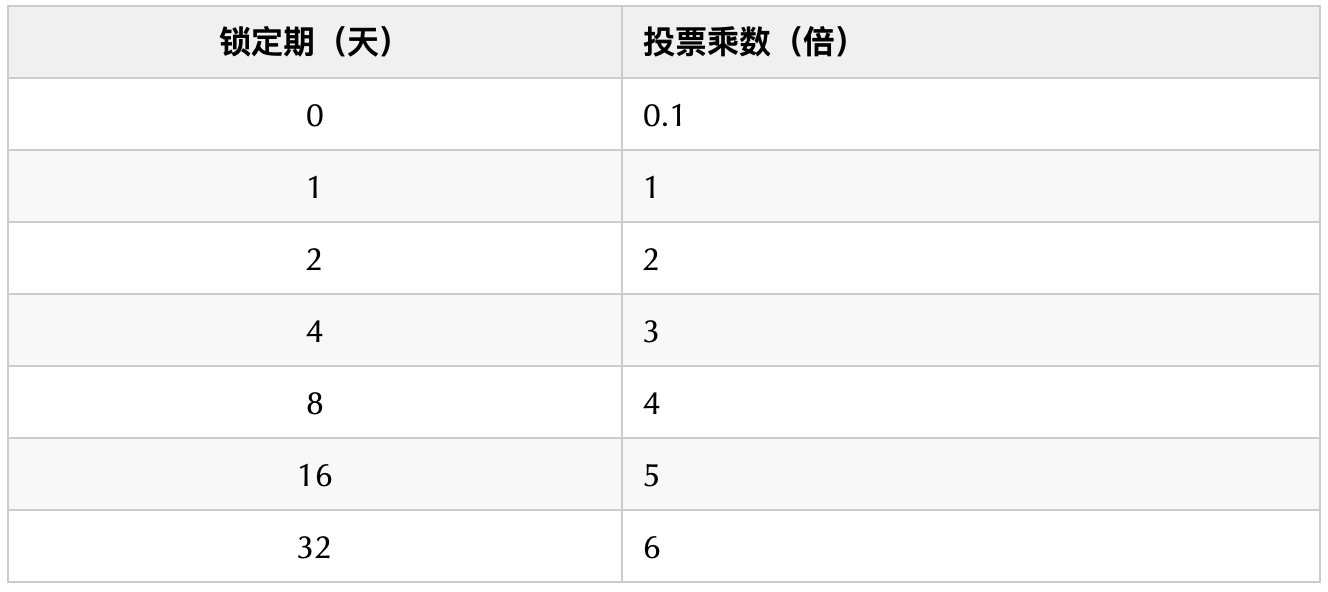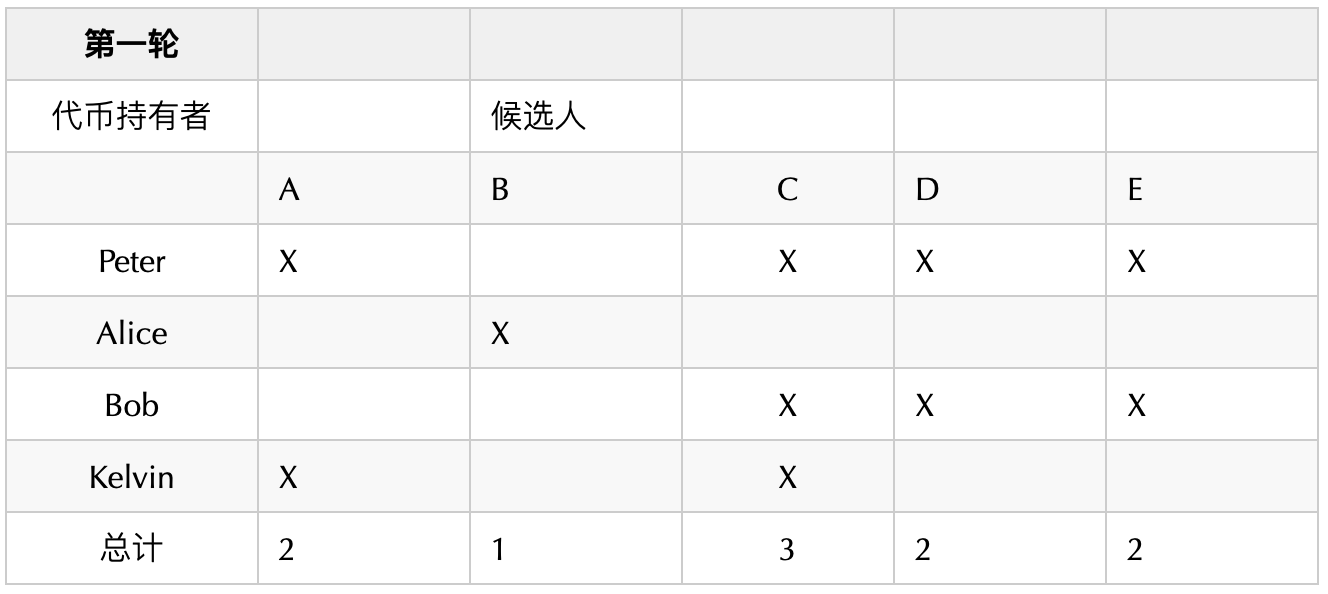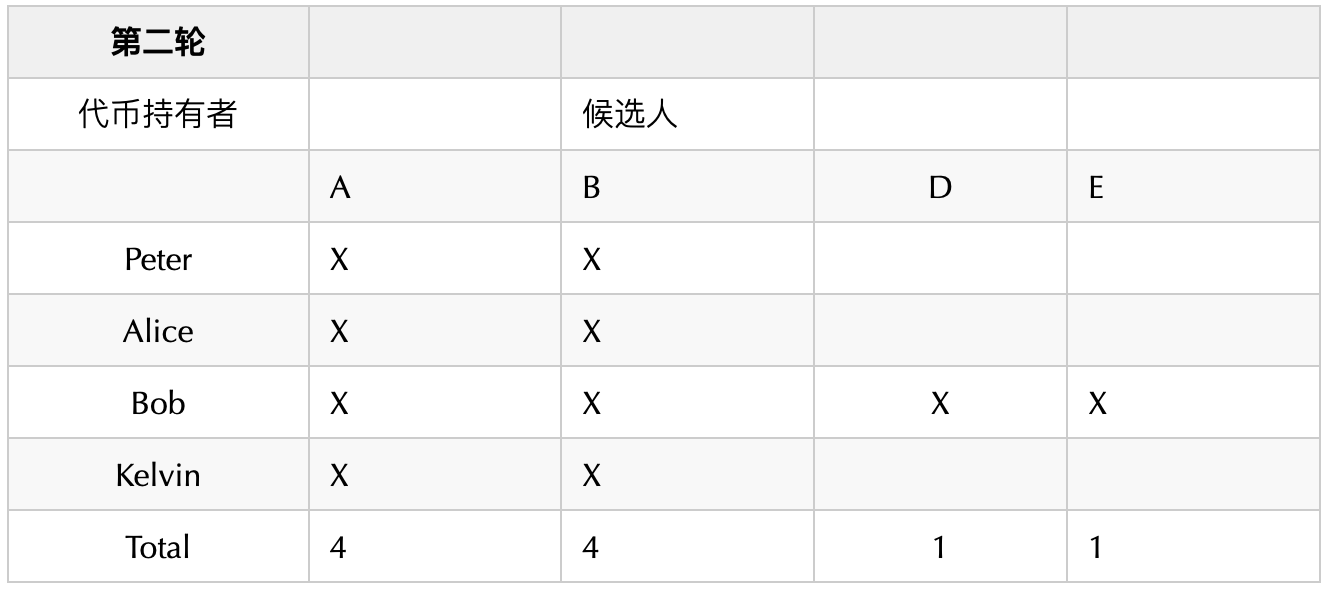Editor's Note: This article comes fromPolkaWorld(ID:gh_6c4c2038ddba), reproduced by Odaily with authorization.
Editor's Note: This article comes from
), reproduced by Odaily with authorization.
We often say that "the development of the Polkadot network is determined by DOT holders", how to decide? It is through Polkadot's exquisite governance mechanism.
Although "delicate" means "complex" to some extent, if you are a DOT holder and want to have an impact on the progress of the Polkadot network through your vote, then you should definitely take the time to understand it carefully Polkadot's governance mechanism. And this article is good information.
To this end, we combine various novel mechanisms, including amorphous state transition functions stored on-chain and defined in a platform-neutral intermediary language (i.e., WebAssembly), and some on-chain voting mechanisms, such as adaptive supermajority Threshold referendum and batchapproval vote. All changes to the protocol must be voted on by a stakeholder referendum.
mechanism
mdnice editor
mechanism
The following steps are the governance process in the Polkadot network:
vote on a proposal
initiate a referendum
For a better understanding of how the Council is formed, you can continue reading the "Council" section below.
referendum
mdnice editor
referendum
Referendums are simple, inclusive, stake-based voting schemes. Each referendum has a specific proposal associated with it, which appears in the form of a privileged function call in the runtime (this includes the most powerful call: set_code, which can switch out the entire code of the runtime, and implementation generally requires "hard Fork" can only do the function). They are discrete events with a fixed time period for votes to be counted, and if the vote is approved, a function call is made. Referendums are always binary, where your only options when voting are to "yes", "no" or abstain entirely.
A referendum can be initiated in several ways:
Publicly submitted proposals;
Proposals made by the Council by majority vote or unanimous approval;
Proposals submitted as part of the implementation of the preceding referendum;
All referendums have an implementation delay period associated with them. This is the period between the end of the referendum and (assuming the proposal is approved) the change being implemented. For the first two ways of initiating a referendum, this is a fixed time. For Kusama this is 8 days, in Polkadot the plan is 28 days. For the third type, it can be set as required.
Urgent proposals deal with major cyber issues that require "fast follow-up." Such proposals would have a shorter execution time.
secondary title
put forward a referendum
public referendum
Anyone can initiate a referendum by depositing a minimum amount of DOT within a certain period (number of blocks). If someone agrees to the proposal, they can deposit the same amount of tokens to back it. Proposals with the highest binding support will be selected for the referendum. Note that this may not be the same as the absolute number of secondments, for example, three accounts with 20 DOT each bound will be more than 10 accounts with one DOT each. The bonded tokens will be released after the proposal is submitted (i.e. submitted for voting).
council referendum
Council Consensus - When all members agree on a proposal, it can move to a referendum. This referendum will have a negative turnout bias. That is, the smaller the number of stake votes, the smaller the number needed to pass the proposal. (See "Adaptive voter turnout bias" below).
Majority of Council Members Consent - Referendums can also be voted on when only a simple majority of council members agree, but at this point a majority is required to pass.
Only one referendum can take place at any one time, unless there is an emergency referendum.
voting timeline
Every 28 days, a new referendum will be voted on (assuming there is at least one proposal in one of the queues). There is a queue for proposals approved by Parliament, and a queue for proposals submitted by the public. The referendums to be voted on alternate between the proposals with the highest votes in the two queues.
The "highest vote" proposal is determined by the stake amount bound behind it. If there are no proposals in a given queue (empty) when it is the turn to create a referendum, and there are proposals waiting in another queue, the proposal with the highest votes in the other queue will become the referendum proposal.
Multiple referendums cannot be held at the same time, except for emergency referendums. An emergency referendum is held concurrently with a regular referendum (whether public or council-proposed) and is the only time when multiple referendums can take place at the same time.
Vote on referendum proposals
In order to vote, voters typically have to lock up their tokens, at least for the execution delay period after the referendum ends. This is to ensure that voting results require some minimum financial investment and avoid ticket sales. You can vote completely unlocked, but your vote is worth a fraction of a normal vote. At the same time, holding a small amount of DOT tokens does not mean that the holder cannot influence the result of the referendum, since time can be invested in locking it. You can read more about it in Voluntary Locking [2].
Example:
Peter: Use 10 DOTs to vote `No`, locked for 128 weeks, then his actual voting weight is 10 * 6 = 60 Votes
Logan: Use 20 DOT to vote `Yes`, locked for 4 weeks, his actual voting weight is 20 * 1 = 20 Votes
Kevin: Vote `Yes` with 15 DOT, locked for 8 weeks, his actual voting weight is 15 * 2 = 30 Votes
Although both Logan and Kevin have more votes than Peter, both have less lock-up periods than Peter, resulting in less weight for their votes.

Statistics Tallying
There are three different scenarios depending on the motions proposed by different entities and whether or not all council members vote for them. We can refer to the table below.
Additionally, we require the following information and use one of the formulas listed below to calculate the vote. For example, let's take a public proposal and apply the supermajority formula. There is no strict quorum, but the required supermajority increases as turnout decreases.
approve - number of votes in favor
against - number of votes against
turnout - total number of tokens voted (excluding convictions)
electorate (total votes) - total amount of DOT issued in the network
absolute majority
Positive turnout bias, which requires a large absolute majority of yes votes when turnout is low, but when turnout increases to 100%, it effectively becomes the last simple majority situation.
absolute majority
Negative turnout bias, which requires a large supermajority of dissenting votes when turnout is low, but when turnout increases to 100%, it becomes the last simple majority situation.
simple majority
Majority pass, a simple comparison of votes; if there are more yes votes than no votes, then the proposal will be passed, no matter how many votes there are in the proposal.
To learn more about the origin of the above formula, please read the Democracy section [3].
example:
assumptions:
John - 500 DOT
Peter - 100 DOT
Lilly - 150 DOT
JJ - 150 DOT
Ken - 600 DOT
- The total amount is only 1,500 DOT
- public proposal
John: Vote `Yes` and lock DOT for 4 weeks => 500 * 1 = 500 votes
Peter: Vote `Yes` and lock DOT for 4 weeks => 100 * 1 = 100 votes
JJ: Vote `No` and lock DOT for 16 weeks => 150 * 3 = 450 votes
Upvoted = 600
Against = 450
Turnout = 750
Total votes = 1500
Since the above example is a public referendum, a supermajority vote will be used to calculate the result. With low turnout, a supermajority yes would require more yes votes to pass this referendum, so the referendum will be rejected based on the above results. Also, only the tokens of the winning voters will be locked. If voters who lost the referendum believe that the outcome of the vote will be negatively affected, their tokens can be transferred, so the voting tokens they hold will not enter the lock-up period. Moreover, the winning proposal will be executed autonomously after a certain execution period.
Voluntary Locking Voluntary Locking
Polkadot has designed a method called voluntary locking, which allows token holders to declare how long they are willing to lock their DOT to increase their voting rights. Therefore, the maximum number of votes for each token holder will be determined by the following Formula calculation:

Maximum number of votes = total amount of tokens * voting multiplier
The conviction multiplier increases the voting multiplier by 1 every time the lockup period doubles.
According to the genesis runtime, the maximum multiplier brought by the lock-up period is set to 6, and the lock-up period is 30 days on Polkadot and 8 days on Kusama.
Adaptive Voting Bias
Polkadot introduces the concept of "Adaptive Quorum Biasing" as a regulatory lever that the council can use to alter the effective absolute Majority, to make it easier or harder for a proposal to pass.
Let's take the image above as an example.
If a publicly submitted referendum has only 25% turnout, then we use a "positive turnout bias" and must total 66% "yes" votes to pass.
Conversely, when turnout reaches 75%, the total number of "yes" votes must reach 54%, meaning that the required absolute majority decreases as turnout increases.
When the council adopts a unanimous agreement to introduce a new proposal, a referendum is voted on using a "negative turnout bias". In this case, it would be easier to pass the motion with a lower turnout, and a supermajority vote would be required to reject the motion. As more and more token holders participate in voting, this bias can approach ordinary simple majority.
These three counting mechanisms—majority passed, supermajority passed, and supermajority opposed—are equivalent to simple majority counting mechanisms as long as the turnout is 100%.
council
first level title
council
To represent passive stakeholders, Polkadot introduces the concept of a "Council". The Council is an on-chain entity composed of multiple participants, each representing an on-chain account. Currently on Polkadot, the council consists of 13 members. This is expected to increase to 24 seats in the coming months. Typically, the council will end up with a fixed number of seats. In Polkadot it is 24 seats and in Kusama it is 17 seats.
The Council is primarily asked to perform three governance tasks: propose sensible referendums, cancel undisputed dangerous or malicious referendums, and elect technical committees.
The referendum can be canceled by a two-thirds majority of the council. This may be a last resort if a problem is found in the proposal for a referendum, such as a bug in the runtime code that the proposal will execute.
If the cancellation of the referendum is so controversial that the council cannot secure a two-thirds majority, it will be up to all stakeholders to decide the fate of the proposal.
secondary title
How to become a council member?
Currently, the Council has 13 seats. All stakeholders are free to express their endorsement of any registered candidate.
Council elections are handled by the same Phragmén election process, which selects validators from the available pool based on nominations. However, token holders’ votes for councilors are separate from any nominations they make for validators. The term of the council is one day. At the end of each period, the Phragmen election algorithm will be run, resulting in the selection of new MPs based on the voting configuration of all voters. Elections also select a certain number of runners up, currently 7 on Kusama and 15 on Polkadot, and these candidates will remain on the ballot.
As opposed to "first in office" (in which voters must choose only one candidate from a list), Phragmén elections are a more expressive way of expressing voters' views. Token holders can think of this as a "yes or no" vote, supporting as many candidates as you want. The election algorithm will identify a subset of candidates that closely matches the indications expressed by voters as a whole.

Let's see an example below.
first round

The example above shows that Candidate C wins the first round of elections while Candidates A, B, D and E remain on the next round of candidates.
For the top N candidates (eg 4 in the above example), they can keep and keep voting until the next election. After round 2, even if candidates A and B get the same number of votes in this round, candidate A will be elected because it has more votes than B after adding the previous unused up votes.
This is the temporary governance configuration for the initial phase of Polkadot. It will be changed if any security gap is found after the third-party audit. Further changes can be made through on-chain governance.
secondary title
main members
The purpose of having a primary council member is to ensure voting turnout even when several members abstain. Council members may vote "soft no" or "soft yes" by not voting and letting other members vote. With prime members, it forces council members to either be explicit in their votes, or have their votes count towards the options voted by the prime members.
technical committee
first level title
technical committee
The Technical Committee can work with the Polkadot Council to propose an "emergency referenda", which can be voted on and implemented quickly. These emergency referendums are only used in emergencies.
A fast-tracked referenda is the only referendum type that can run concurrently with other valid referenda. Thus, with a quick referendum, two valid referendums can be held at the same time. Voting for one will not prevent users from voting for the other.
first level titlehttps://wiki.polkadot.network/
common problem
common problem
secondary title
How can I ask the board to make changes on my behalf?
The first step in lodging a complaint with the council is to get in touch with the MP. There is no guarantee that every MP will hear your voice. However, here are some good places to start where you can grab the attention of some MPs. The Polkadot Direction[5] Matrix chat room is one such place. Once you have created an account and joined this chat room, you can post a thoughtful message here to clarify your situation and provide reasons why you believe the council should consider making changes to the agreement on your behalf.
In some cases, you may need a place for longer discussions. To this end, a post on Polkasembly [6] is proposed. When you post on Polkasembly, make sure to provide all the evidence of your situation and make it clear what changes you will be advising MPs to adopt. Remember: MPs are not the ones who need to make changes, and it is your responsibility to have a good reason why you want to make changes.
first level title
Democracy Pallet[8]
reference resources
Initial Governance Description [7]
text
References
[1] Statistics:https://wiki.polkadot.network/
[2] Voluntary Locking: https://wiki.polkadot.network/
[4] Borda count: https://en.wikipedia.org/
[5] Polkadot Direction: https://matrix.to/
[6] Polkassembly: https://polkadot.polkassembly.io/
[7] Initial Governance Description:https://github.com/
[8] Democracy Pallet: https://github.com/
[12] https://wiki.polkadot.network/docs/en/learn-governance: https://wiki.polkadot.network/